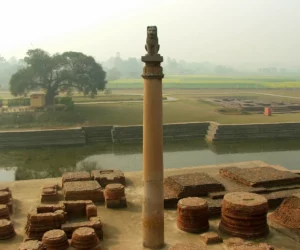The Pillars of Ashoka: Monuments of Ancient India The pillars of Ashoka are a series of monumental columns dispersed throughout the Indian subcontinent. These were erected by Ashoka the Great, the third Mauryan Emperor, who reigned from around 268 to 232 BC. Ashoka referred to his pillars as “Dhaṃma thaṃbhā,” meaning “pillars of the Dharma.”…
Mauryan Empire
The Maurya Empire, one of the most extensive and powerful political and military empires in ancient India, existed from approximately 322 to 185 BCE. Founded by Chandragupta Maurya with the help of his adviser Chanakya, the empire unified vast stretches of the Indian subcontinent for the first time. Its influence extended across modern-day India, Pakistan, Bangladesh, and parts of Afghanistan and Iran. The Mauryan capital was Pataliputra, located in present-day Patna, which was hailed as one of the greatest cities of the ancient world. Under the rule of Emperor Ashoka, one of its most famous leaders, the Mauryan Empire reached its zenith both in terms of geographical expansion and cultural and economic prosperity.
The Mauryan Empire was impressive not only in terms of its size but also due to its achievements in governance, economy, and culture. Its sophisticated administration system featured a regimented civil service that oversaw everything from municipal hygiene to international trade. Emperor Ashoka’s reign marked a particularly significant era as he converted to Buddhism after the Kalinga War and became a proponent of peace and non-violence. His edicts, carved on rocks and pillars throughout the empire, promoted moral and ethical values based on Buddhist principles. The Mauryan Empire also excelled in art and architecture, with the Ashokan pillar being one of the iconic symbols of its artistic heritage. Despite its eventual decline, the legacy of the Mauryan Empire continued to shape Indian culture and political systems long after its fall.
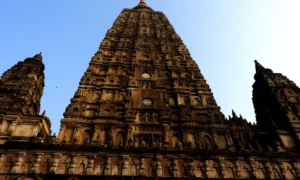
Mahabodhi Temple
The Mahabodhi Temple, also known as the “Great Awakening Temple,” is an ancient Buddhist temple located in Bodh Gaya, Bihar, India. It is recognized as a UNESCO World Heritage Site and is revered as the place where Siddhartha Gautama, who later became known as the Buddha, attained enlightenment. This site has been a focal point of Buddhist pilgrimage for over two millennia.
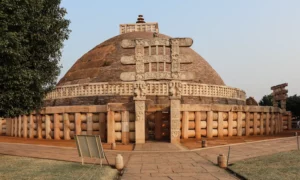
Sanchi Stupa
Sanchi Stupa, located in the Raisen District of Madhya Pradesh, India, stands as a monumental representation of Buddhist architecture and religious heritage. This complex, particularly noted for the Great Stupa, is situated approximately 46 kilometers northeast of Bhopal, the capital of Madhya Pradesh. The site holds immense historical and cultural significance, tracing back to the Mauryan Empire in the 3rd century BC.
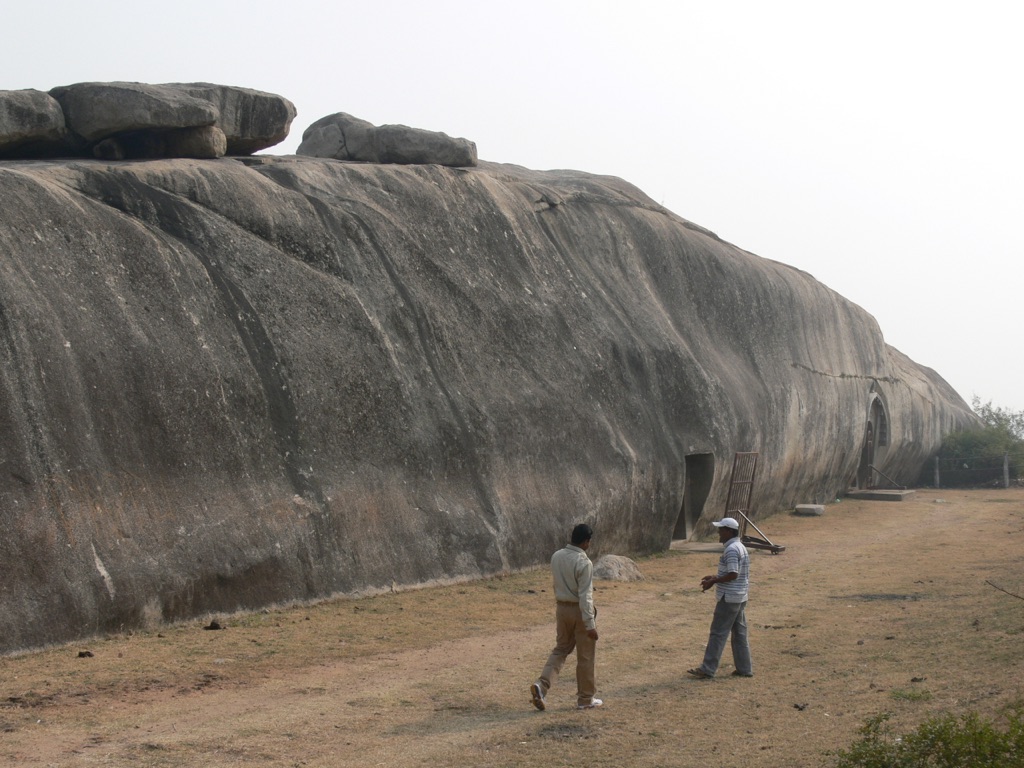
Barabar Rock Cut Caves
The Barabar Rock Cut Caves are an ancient complex of caves located in the Jehanabad district of Bihar, India. Carved out of granite, these caves are renowned for their historical significance and intricate architecture. They are the oldest surviving rock-cut caves in India, with inscriptions and architectural features that provide valuable insights into the religious and social practices of the time. The caves were used by ascetics from the Ajivika sect, which was once a major religion during the Mauryan era. The Barabar Caves are a testament to the skill and artistry of ancient Indian craftsmen and hold a special place in the study of Indian history and architecture.
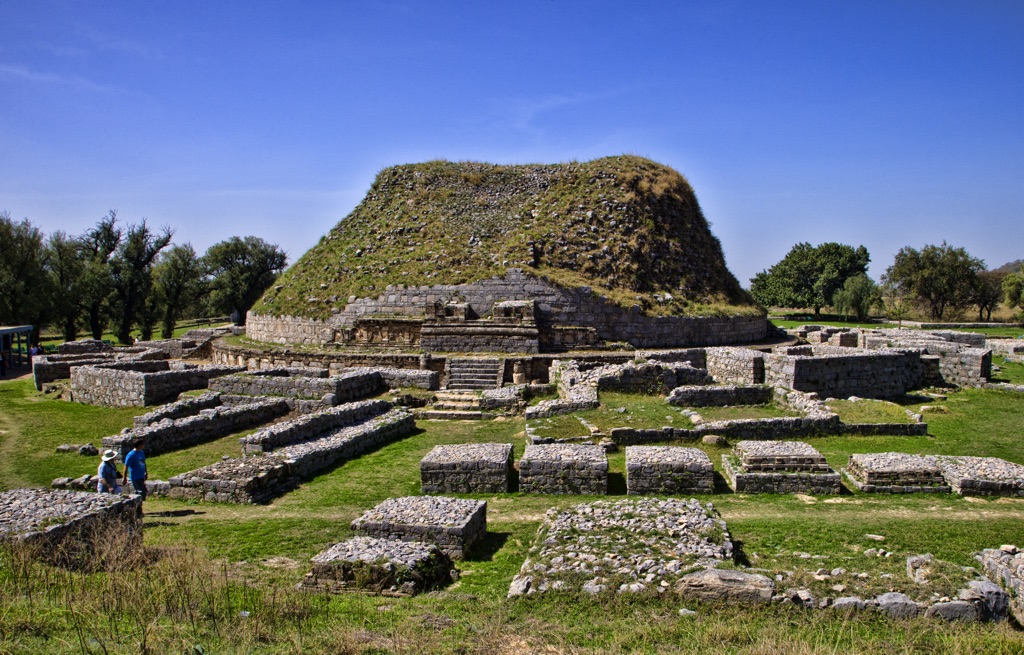
The Dharmarajika Stupa (Taxila)
The Dharmarajika Stupa, a significant Buddhist structure, stands as a testament to the religion’s ancient roots and influence. This stupa, located in Taxila, Pakistan, is part of a larger complex that was once a hub for Buddhist learning and worship. It is believed to have been established by Emperor Ashoka in the 3rd century BCE. The Dharmarajika Stupa holds not only religious significance but also historical and archaeological importance, as it provides insights into the Buddhist culture that once flourished in the region.
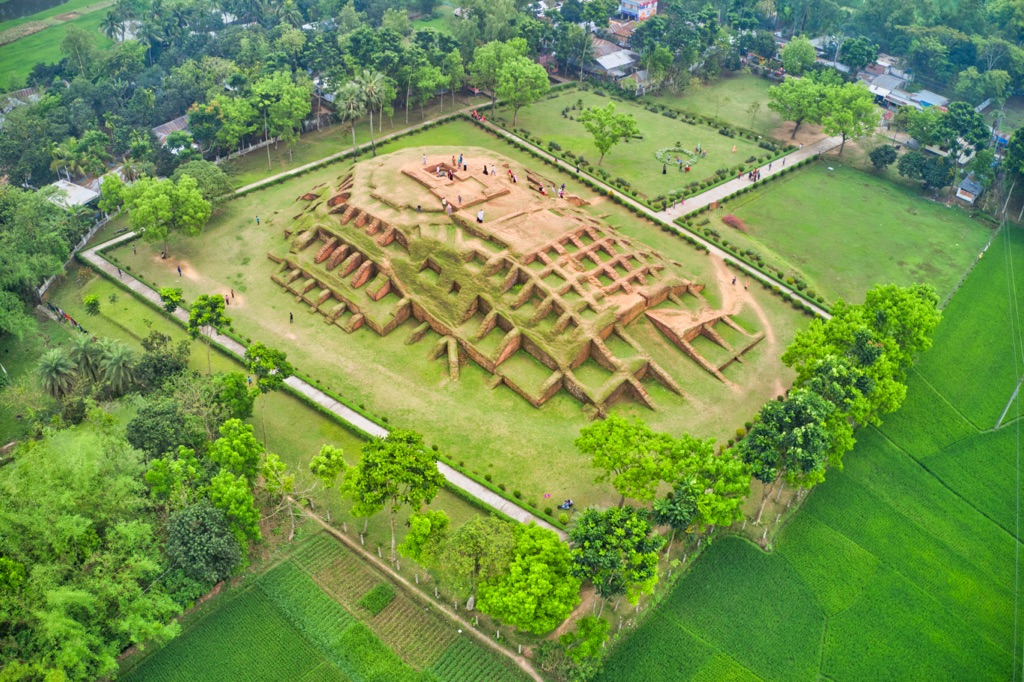
Gokul Medh
Gokul Medh, also known as Lokma Rajar Dhibi, is a historical site located in Bangladesh. It is an ancient archaeological site that bears the remnants of past civilizations. The site is particularly significant for its Buddhist vihara, which dates back to between the 6th and 12th centuries AD. The mound on which Gokul Medh stands is a testament to the architectural prowess of ancient builders and the rich cultural heritage of the region.

